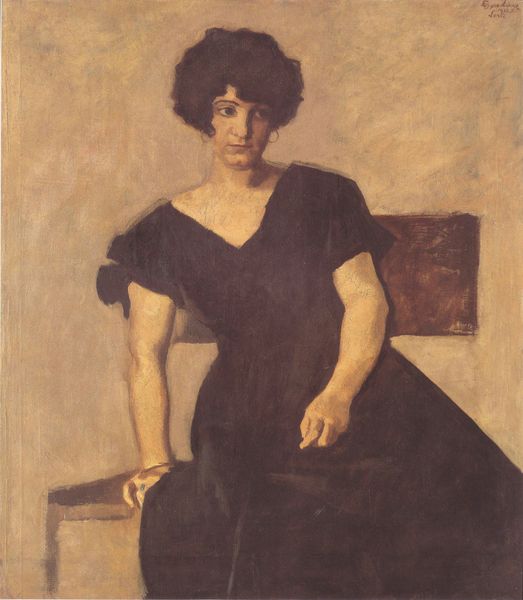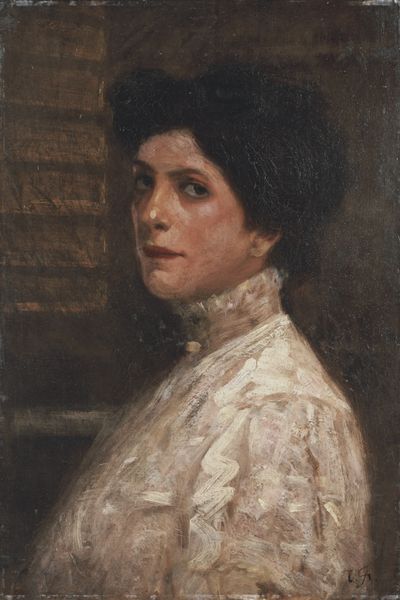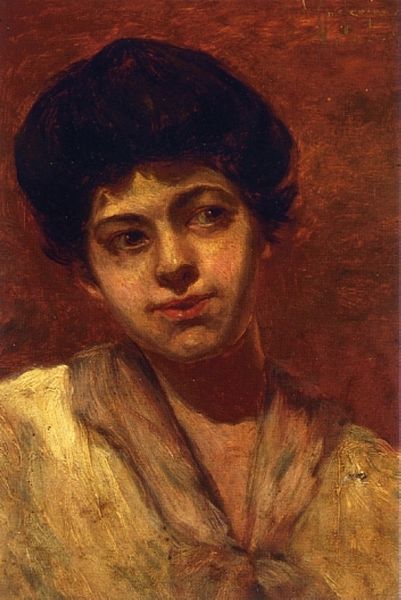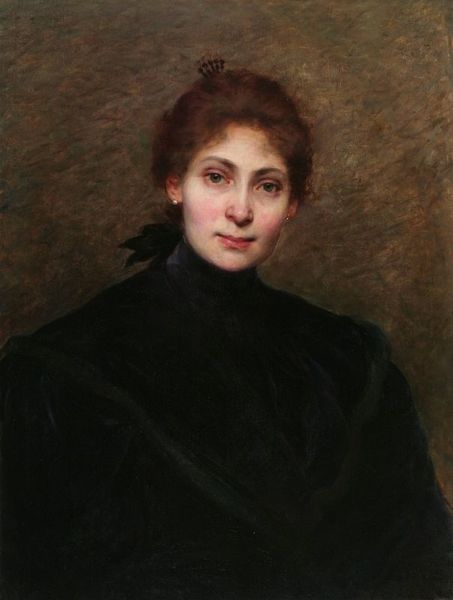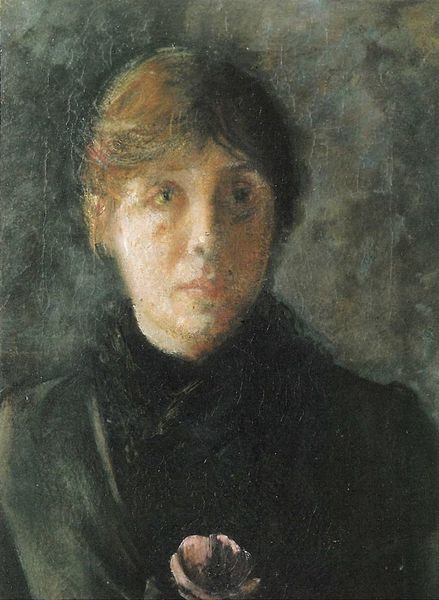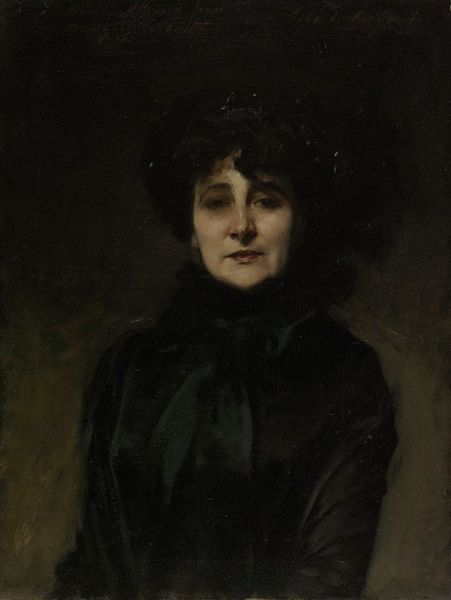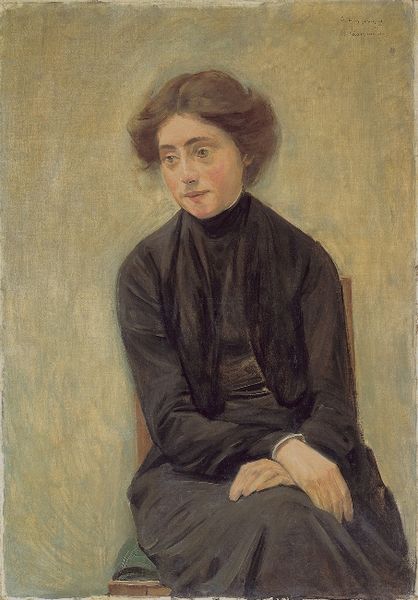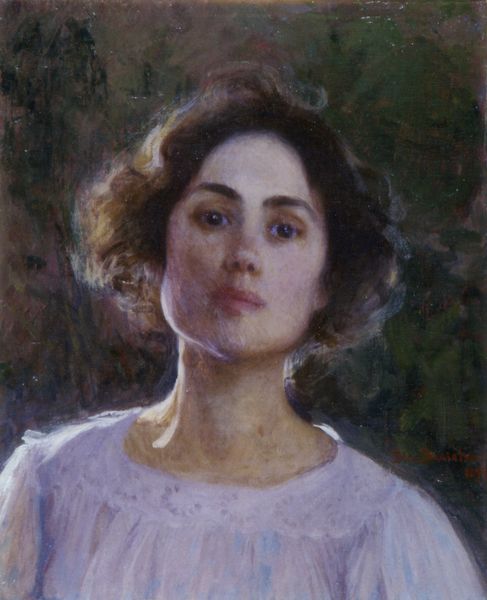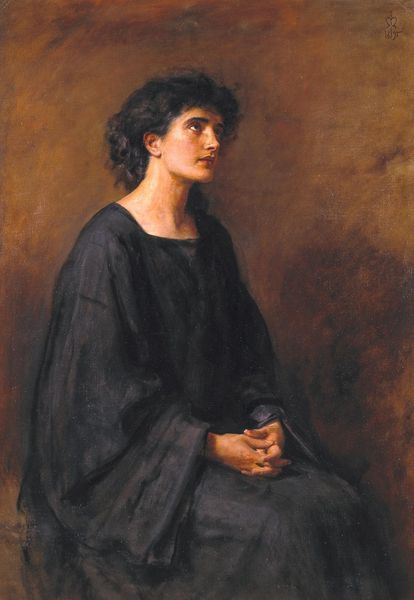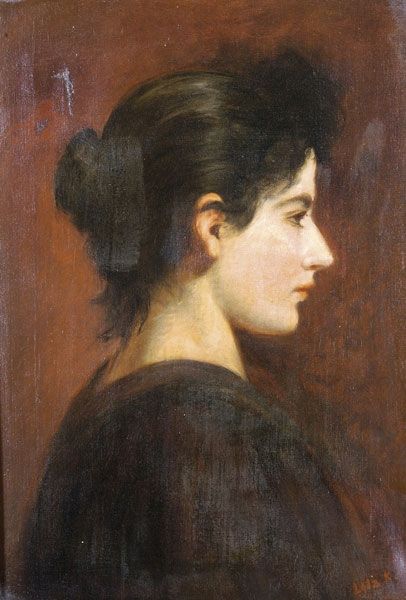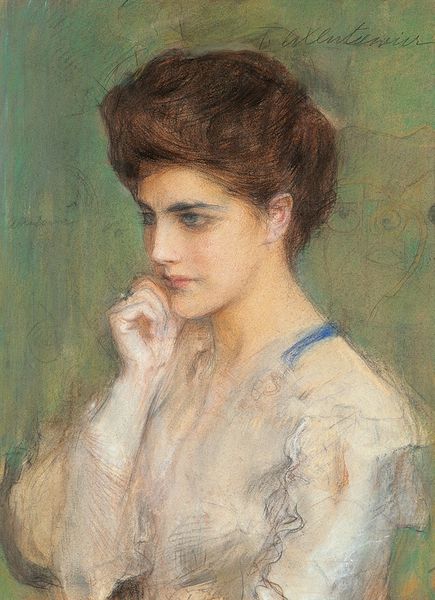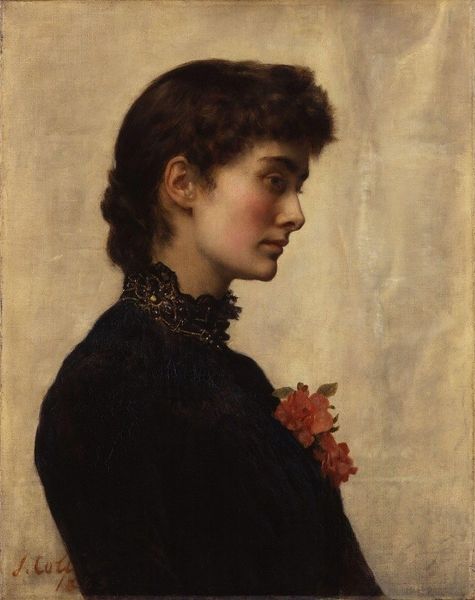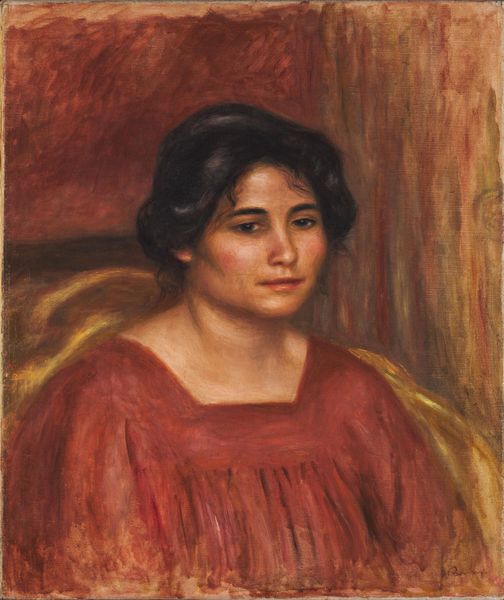
painting, oil-paint
#
portrait
#
painting
#
impressionism
#
oil-paint
#
figuration
#
intimism
#
modernism
#
realism
Copyright: Public domain
Curator: Before us, we see "Portrait of an Italian Lady" by Fujishima Takeji. He worked in the late 19th and early 20th centuries, a period marked by rapid industrialization and shifting social hierarchies, which significantly impacted gender roles and representation, as we see in this striking figure. Editor: My first impression is one of introspection. She has a penetrating gaze, but the dark tones and subdued light create an atmosphere of melancholic contemplation. I sense a real vulnerability in her stillness, a feeling echoed in much turn-of-the-century art, don’t you think? Curator: Absolutely. This work embodies the late 19th century shift away from the objectified female form prevalent in earlier academic painting, though it is hard to miss that the woman here conforms to prevailing norms about bourgeois comportment: passive, submissive, and very reserved. Editor: I'm drawn to the gold surrounding her that is contrasted by the darkness of her dress. Almost like she's cloaked, it evokes a complex tapestry of historical meanings and emotional resonances tied to both the religious art of centuries past as well as more contemporary and social signifiers tied to the female experience. Curator: And yet, it seems to invite the viewer into a conversation, doesn’t it? Takeji places this female figure not on display, but rendered with psychological depth that mirrors the burgeoning field of psychology at the time. As the subject's face seems both soft and rigid, what are the gendered assumptions inscribed upon her through composition, line, and color? I wonder how women at the time viewed their place, not as a decorative muse but as someone fully realized. Editor: Well said! I also can’t ignore her dark attire and high neckline – signs of modesty. It highlights the visual coding of female virtue and restraint that was so vital during this era. Takeji invites the audience to ask questions and draw their own answers in relation to societal standards. Curator: Exactly. This "Portrait of an Italian Lady" reminds us that representations of women are never neutral. They’re always enmeshed in broader narratives of power and gender relations. Editor: A work that’s as much about what it reveals as it is about the silences it maintains.
Comments
No comments
Be the first to comment and join the conversation on the ultimate creative platform.
